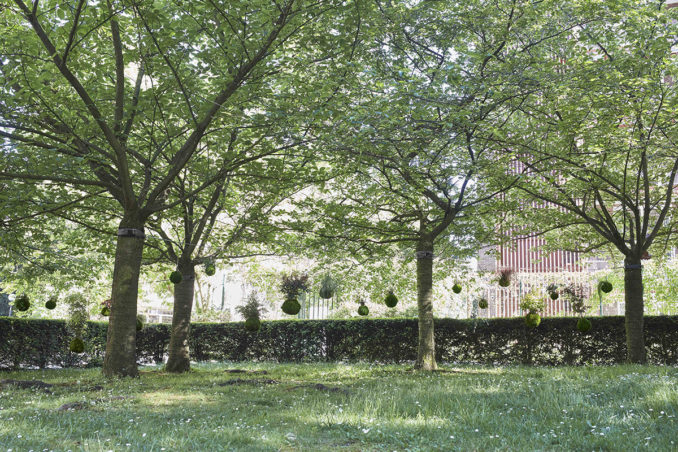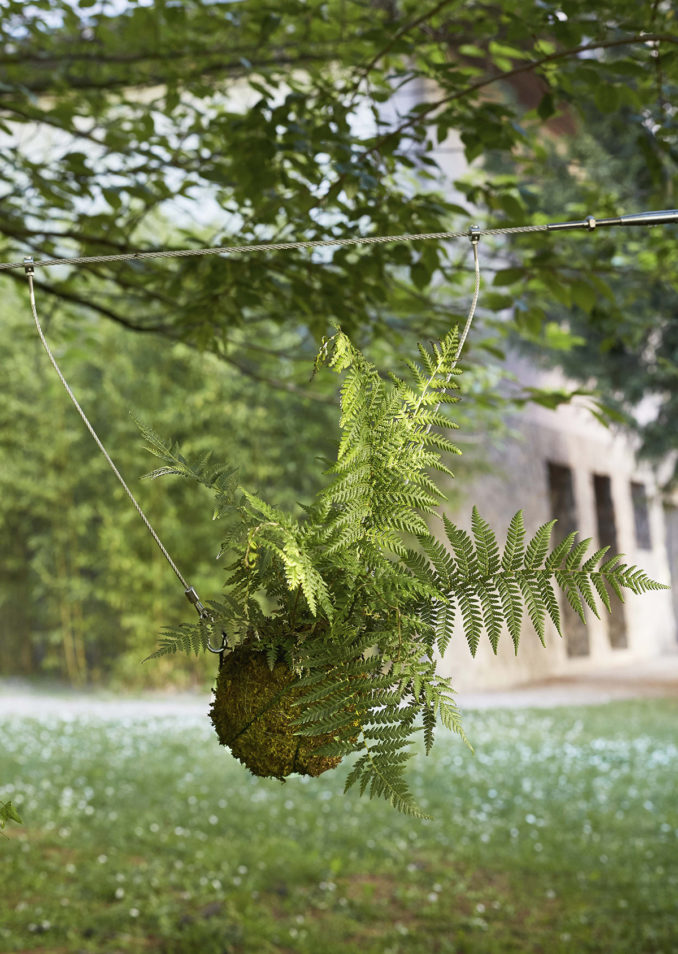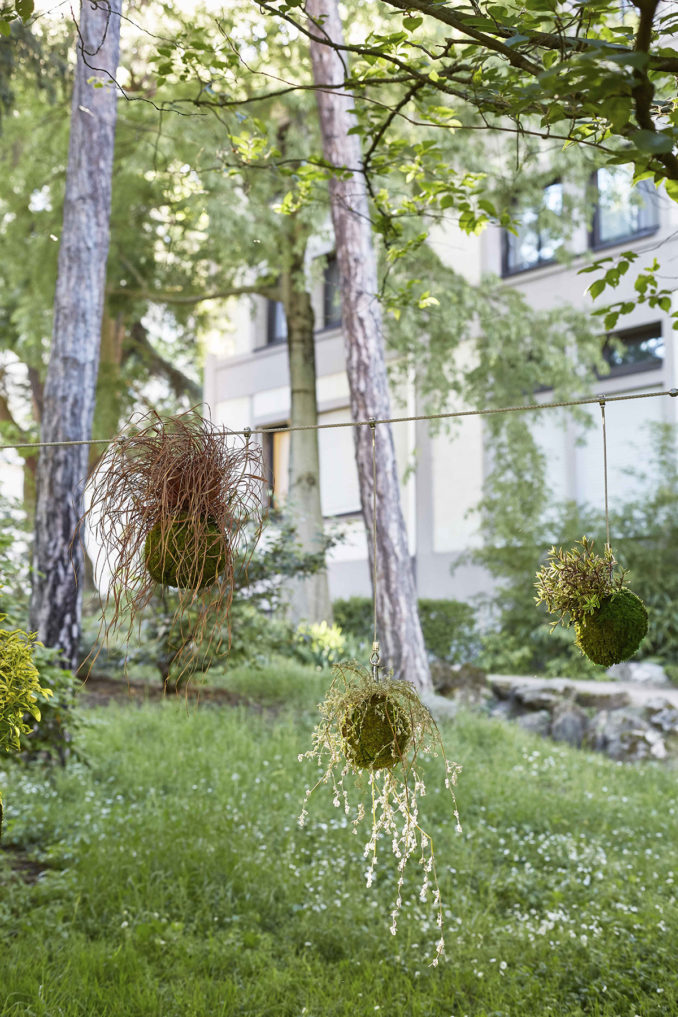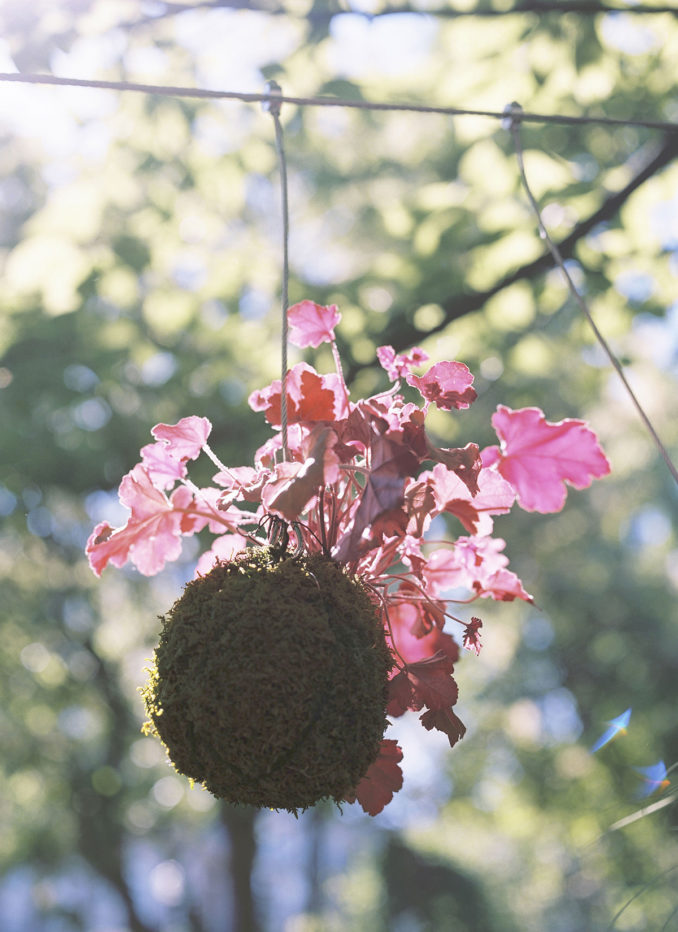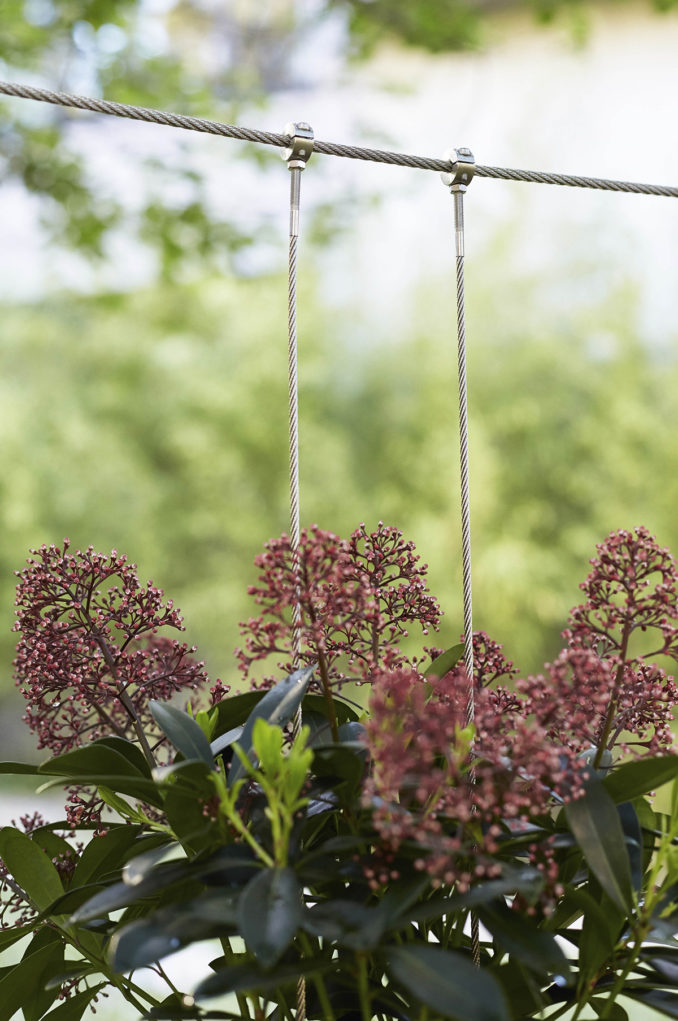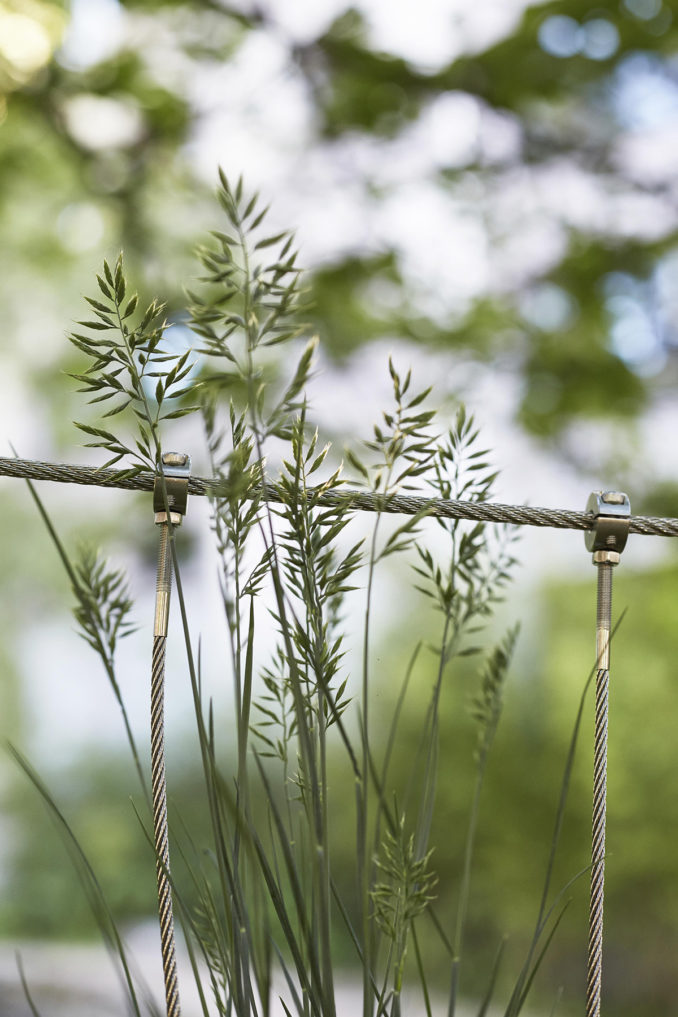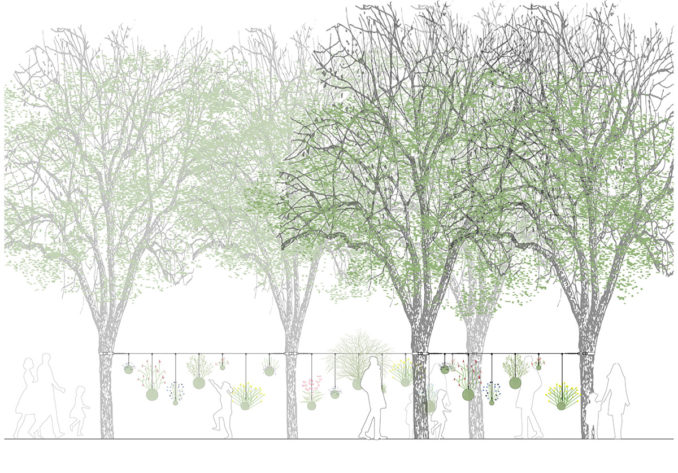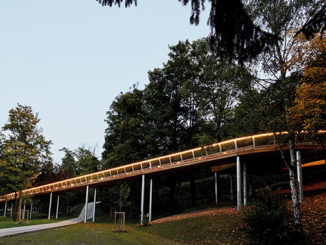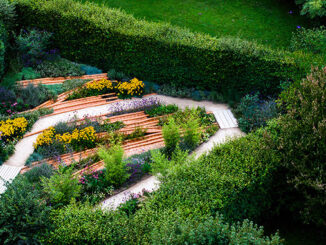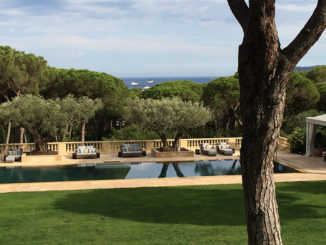In the Japanese garden of the Cité internationale de Paris, kokedamas bloom among cherry trees. This floral decoration is rooted in contemporary Japanese plant techniques. The art of kokedama (from the Japanese 苔 玉) consists of wrapping the root ball of a plant with a ball of substrates covered with moss, then suspending the ensemble with a cable. This method makes it possible to bring observers closer to the plant by placing it at eye level, facilitating the observation in detail of the coloured shades of a flower, the shape of foliage, or the structure of a stem.
This cabinet of curiosities is composed of plants varying in height, size, and appearance, some with twisted or capricious silhouettes, favouring a non-compliant aesthetic. The rose-coloured foliage of the heuchera and variegated yellow of the Japanese spindle contrast with the refined cut of the tree fern’s fronds. The burgundy blooms of the Japanese skimmia respond to the white chrysanthemum blooms. Tufts of grasses – finestem needlegrass, blue fescue and uncinia – show off their hanging, put up or frizzy and garnet-coloured hair. They bring abundance and luxuriance to the composition.
The kokedamas are suspended at different heights depending on the architecture of the plantation. The moss sphere that supports them also varies in size, depending on the root volume. Thus contained in a natural-looking sheath, the plant avoids the domestication effect of potting. The art of kokedama is characterized by its durability and ease of implementation, unlike ikebana which uses cut plants, or bonsai that requires years of patience.
The installation is part of a sustainable development approach characterized by the simplicity of materials used and the economy of means. By using a sphere of soil and moss to present the plant, the use of any artificial container is avoided. The moss protects the roots and retains moisture, therefore reducing the need for watering. All components of the project are recyclable: the plants can be transplanted and all materials reused.
The Cité internationale universitaire is the largest site welcoming students and researchers in Paris. Its 40 houses located in a landscaped park display the colours of the diversity of the world and its residents, making up a mosaic of 140 nationalities. Its environment is conducive to the creation and renewal of points of view. The “Jardins du monde en mouvement” festival offers young talents the opportunity to make a landscaped space their own and endow it with a creative, committed and ephemeral project. Viewers are thus invited to apprehend the works in this context of dialogue between architecture and landscape, while becoming more aware of sustainable development issues. This project was carried out in partnership with students of the Cité, during a residency at the Maison du Japon.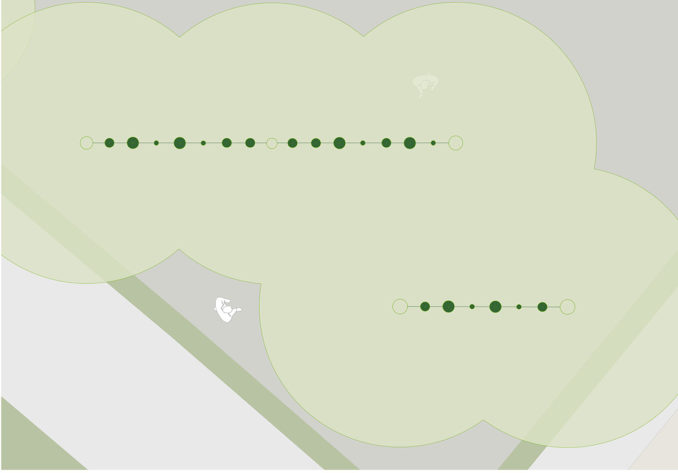
SUSPENDED GARDEN
Fab-Land
www.fab-land.com
Project location:
Cite internationale universitaire
Paris, France
Team:
Fab-Land, Landscape Architect
Stephane Ruchaud, Photographer
Mélanie Rumpelmyr, English translation
Client :
L/Oblique, centre de valorisation du patrimoine
Cite internationale universitaire
Maison du Japon

